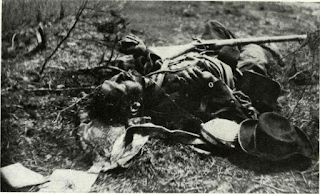But to the large, easily-probed holes gouged out of
At nominal ranges, velocities were higher and were
It was on the living, those who survived the trauma
So it is that the literature of the era speaks of “Gunshot wounds” as if no one had died; the carefully detailed illustrations in the Medical & Surgical History
For the nature of the Minie ball wound was often
At nominal ranges, velocities were higher and were
It was on the living, those who survived the trauma
So it is that the literature of the era speaks of “Gunshot wounds” as if no one had died; the carefully detailed illustrations in the Medical & Surgical History
For the nature of the Minie ball wound was often

Comments
Post a Comment